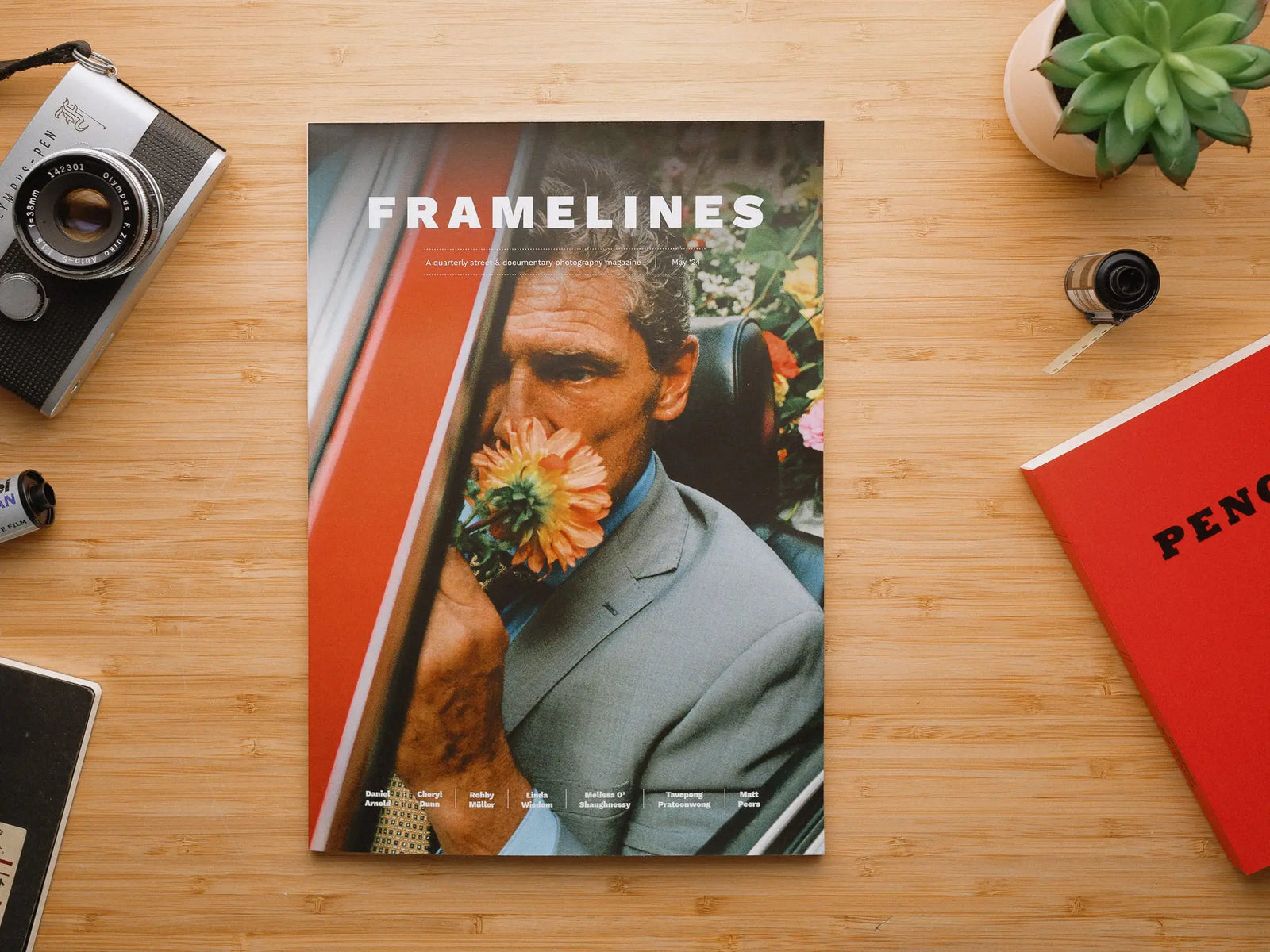
The Fujifilm GFX 50s on The Street
A few years back, I was pretty into medium format film photography, experimenting with various cameras including the Mamiya 7, 645 and Pentax 67. I enjoyed the experience of shooting film, the colours, etc, but the rising costs really began to put me off, and for me it became harder and harder to get consistent results from scanning. After setting aside film, I had not explored digital medium format—until now!
Becoming a father shifted my focus slightly away from street photography towards more local and intentional photography pursuits. Mixing landscapes, street portraits, and generally exploring different formats.

First Impressions
The GFX 50s is surprisingly manageable for a medium format camera—comparable in size and weight to a professional DSLR, contrary to what you might expect. It's not too chunky or heavy, fitting nicely even in the storage compartment of a pushchair during daily walks.
The four by three aspect ratio of the GFX 50s is something I've come to appreciate. It allows for a more inclusive frame, particularly useful in street photography. I like to be able to include some height in my images and include feet where I can; People being cut off at the ankles kind of triggers me, ok?

For Street Photography
I think most people assume that medium format systems are slow, the GFX 50s has proven pretty capable on the streets. Yes, it might not match the burst speeds of sports-oriented cameras like Sony's offerings, but with three frames per second, it handles motion and dynamic scenes fairly well. I would often find myself using it to 'fish' for photos by staying relatively stationary in one spot, and this would make it easier to react to what was unfolding on the street.

Using the GFX means you do have to anticipate shots a bit but I think this has helped hone my craft on the street. It does also mean when you managed to capture a dynamic photo on the street, it is all the more rewarding. I will say though that the shutter is extremely loud, and it somehow sounds like a film camera advancing film to the next frame, so it definitely isn't the most subtle option for the street.

For Portraits
I've really been enjoying using the GFX50s for Portraits. There's something about the size and the way the camera looks that gives me a bump in confidence when approaching strangers, as it looks like a very professional piece of kit. I've found everyone I approached for a portrait with the GFX said yes, of course I didn't ask if this was because the camera looked so professional. Maybe It's been down to the extra confidence it gave me.
Editing and Dynamic Range
One of the standout features of the GFX 50s is the sensor size. A larger sensor offers greater latitude and dynamic range, which is crucial for maintaining consistency in your photographic work, whether it's street scenes, portraits, or landscapes. Being able to recover shadow detail is extremely important to me as I like to maintain a natural look to my images, and the GFX sensor has by far the most detail in the shadows that I have seen in a digital sensor ( this is also the only digital medium format sensor I have ever used.)

Final Thoughts
The GFX 50s challenges the norms of street photography gear, providing a fresh perspective with its unique combination of medium format quality and relative agility. The flexibility in post-processing and the cinematic quality of the images may convert some skeptics to fans.
However, whether these differences are discernible in everyday applications or platforms like Instagram... I doubt it. This camera, though, isn't just about the output; it's about enjoying the process and the nuances of higher image quality, dynamic range and depth of colour.











Leave a comment (all fields required)